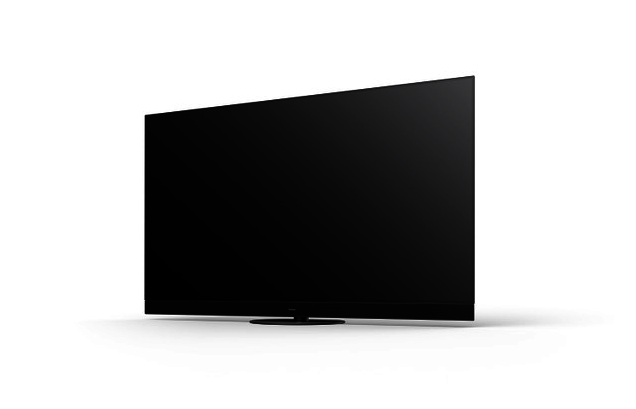Panasonic took to the stage at CES 2024 today to unveil its new flagship OLED TVs for 2024, the Panasonic Z95A and the Panasonic Z93A, featuring LG Display’s most advanced panel yet and, for the first time, Amazon’s FireTV operating system.

Once again, Panasonic has opted for LG’s White OLED display technology over Samsung Display’s QD-OLED panels with Z95A and Z93A TVs, and we’re expecting to see some noticeable improvements in picture quality. The new OLED panels are said to be 70% brighter than standard OLED, with LG last week explaining that they incorporate a new technology called Peak Highlighter that boosts the brightness of small highlights. While the company hasn’t given any specific figures, it claims that brightness will be “measurably superior” to last year’s panel.
Whether the Panasonic Z95A and Z93A are as bright as Samsung’s new 3,000-nit QD-OLED panel remains to be seen, but the Japanese company has thrown in some of its usual enhancements. The TVs, which succeed last year's MZ2000 flagship, will be fitted with Panasonic’s Master OLED Ultimate Panel, which means it has performed some additional engineering work and merged that with the colour-tuning skills of Stefan Sonnenfeld, the respected Hollywood colourist.
Panasonic’s Z95A utilises a Master OLED Ultimate panel module2 which is equipped with state-of-the-art Micro Lens Array and a multi-layer heat management configuration developed by Panasonic engineers. As a result, the company reckons the new panel delivers “unprecedented brightness” thanks to improvements in the driving technology and this heat management. The new panel also boasts a slick 144Hz refresh rate, making the Z95A and Z93A among the world’s first OLED TVs to support such slick frame rates to level up gaming experiences.
There’s also a brand new, more powerful chipset at the heart of the TVs. The HCX Pro AI Processor MK II will sit inside both the Z95A and Z93A and power a new 4K Remaster Engine that’s said to elevate streaming picture clarity by combining AI and mathematical models for crisp, natural images, and superior streaming noise reduction.
Also supported is Dolby Vision IQTM Precision, a more advanced form of HDR, while the 360 Soundscape Pro audio technology is meant to deliver immersive 3D sound, even if the TV is not connected to external speakers. With the new chip, Panasonic’s latest TVs also enable Dolby Vision gaming at up to 144Hz. Video gamers will also appreciate the new Game Sound Modes for role-playing and first-person shooter game genres. The former is said to create a 3D soundscape that enhances dialogue quality in immersive stories, while the latter is tuned to accentuate the vital sound cues such as footsteps, to give gamers a tactical edge during fast-paced shooting games.
Perhaps the most intriguing development is that Panasonic has dropped its My Home Screen OS for Amazon’s Fire TV platform, which has the abilty to aggregate content from broadcast and streaming services into one TV catalogue. As a result, viewers will benefit from a more streamlined content discovery experience.
“With such vast options, the real challenge becomes pinpointing exactly what you want to watch,” said Panasonic Entertaiment and Communication Co’s CEO Akira Toyoshima. “Therefore, our new mission goes beyond just providing great pictures and sound. It’s about simplifying the process of content discovery, ensuring it's not just easy but delightful,”
Because the TVs are powered by Fire TV OS, they’ll also be Alexa-enabled, providing a superior navigation experience for those who like using their voice to control the TV. The far-field voice control with Alexa makes it possible to control the TV from anywhere in the room, for example launching apps, playing music, searching for content, lowering the volume and more, with simple, clean voice commands.
Tight integration with other Alexa-enabled smart home devices is also onboard, and when the Panasonic Z95A and Z93A TVs are not in use, they can double as dynamic displays that showcase artwork or personal photos, similar to something like Samsung’s The Frame or LG’s G-series OLED TVs.
Panasonic said the Fire TV platform has also been enhanced with some of the proprietary features of its My Home Screen OS, including its Penta Tuner feature to enhance broadcast reception. This technology is said to support reception via the Internet (IPTV) and home network (TV>IP), meaning TVs can be located independently of an antenna socket and programmes enjoyed in every room without the need for an extra TV connection.